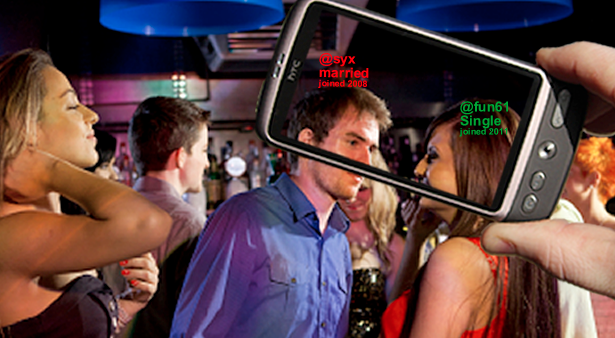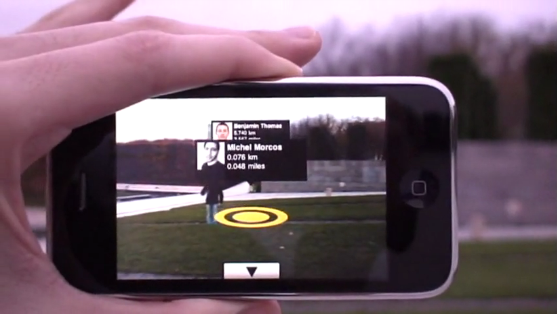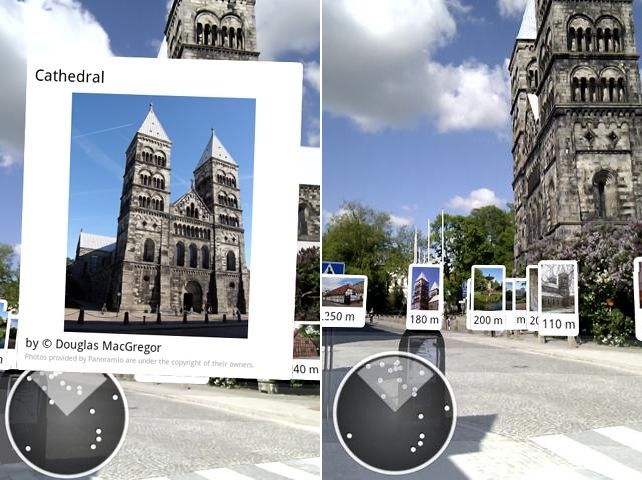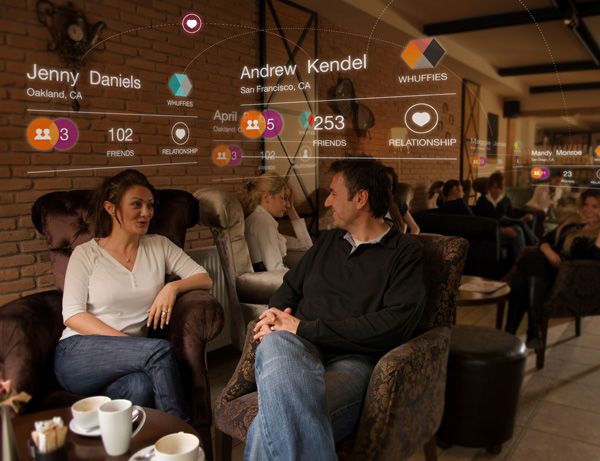We’ve spent the last few days on AR Week at Pocket-lint not just looking at the lengths we go can go with augmented reality but what we can get it to do for us. We’ve picked the brains of the top minds in the field in a series of interviews but each afternoon has been solidly placed on practical application.
So far we dreamt of a future of maintenance and repair, travel and tourism, property and real estate, and advertising and retail but, for the final piece in the series, we thought we’d bring it to a close with something to involve everyone. This is what augmented reality could do for your social life.
Before we head of into the clouds, it’s worth taking a look at what’s currently available for AR on the social scene. The short answer is not much. There’s a decent clutch of apps out there on iOS and Android. In terms of the way they work though, ultimately, they’re rather similar and suffer the same kinds of problems as much of the mobile augmented reality out there at the moment, but the ideas are certainly in the right direction.
Twitter 360 is one such from app developers Presselite. The idea is that it uses your phone's camera view combined with your GPS position to show you where those people, which you follow, last follow tweeted from. The practical use in its current state is arguable but if, instead, their information overlayed onto the real scene were tags of locations where people had tweeted in the past, that could be more interesting. Rather than being about where your friends are now, it suddenly becomes more about the context of what people were looking at to inspire them to tweet in the first place - a bit like a series of very minor event blue plaques but possibly interesting nonetheless.
Photos Around is another interesting take on this kind of thing. Rather than tweets, the information overlay this time, to anyone holding up their mobile phone camera to the world, are tags with photos attached to them. The app leverages online place-based picture service Panoramio and let’s you stand in the location where those shots were taken. It’s an application that’s probably more touristy than anything else but it does bring up an interesting idea of having media associated to a virtual tag - something we’ll get on to in a minute.
Of course, the major trouble with these apps, and those like them, are the way they work at present. The app finds your position through are frustratingly inaccurate GPS system, consults the Internet and then tells you what they think is supposed to be nearby. In terms of functionality, they’re arguably no better than getting the same information on a top down map, but what if we could get beyond that for a minute? What if your camera knew what it was looking at? We wouldn’t necessarily have to take it as far as the AR eureka moment of true computer vision, as we talked about in our interview with tracking expert Georg Klein. How about something which our phones can already do? Something as simple as face recognition. How about an application that, when you hold your phone up to a person, it knows who they are and then displays information on your screen all about them?
This, in fact, is precisely what TAT (The Astonishing Tribe) demoed as a concept Android app at Mobile World Congress 2010 and what the Swedish design collective called “Recognizr”. It works by tying into your social networks so that, when someone hovers their phone over you, the app pulls down and displays whatever you’ve just posted on them.
So, as to keep everyone happy, it’s been designed as a separate platform such that each person has to be signed up to it in order to be recognised, but let’s blow this open a bit further as no doubt such a concept would be. There’s no reason why such a piece of mobile software couldn’t recognise people who haven’t signed up by skimming Facebook, Twitpic, Flickr or, in fact, the entire Internet for images and, once it knows who someone is, then it can search based on just the name to pull down any information it can - likes, dislikes, opinions, personal life information of whatever else people have chosen to upload of themselves. The practical applications become endless.
If you don’t know someone, you can point your camera at them and maybe find out if you’d like to. Do they share the same interests as you, are they witty and, of course, are they single? You could choose an appropriate opening gambit, know what they’re interested in at the moment and, in fact, this is just the kind of thing that was touched on at the end of Pranav Mistry’s SixthSense demo.
Of course, this doesn’t have to be some kind of invasion of privacy. Doubtless, should this technology ever become commonplace, the very next step would be for Facebook, Twitter and such to start adding an opt in warning. Once that happens, we’re in a situation where people are happy to be AR checked out. Perhaps they’re looking to meet a new person themselves? They could even tell you by adorning their virtual persona with a symbol that lets you know. It might also be just kind of application to save you a lot of time at networking events. Is this person someone I should have a conversation with? It would certainly be an interesting social effect to see someone making eyes at you across the room by scanning you with their mobile phone.
Taken this far, suddenly our virtual and real life personae start to merge. Facebook began this migration from a hidden identity behind a keyboard and made up user name towards a more public online existence, one to which our colleagues and families became connected. Once strangers can get access to those privileges too, then the distinction between our two lives will have disappeared altogether, and there’s a number of ways it can go from there - some good and some bad.
Will we started lying more online to present more socially attractive versions of ourselves to the world? Is a conversation with a stranger still interesting if you already know everything about them and will AR lead us away from potentially inspiring encounters if it tells us that someone isn’t the kind of person that, on virtual paper, that we wouldn’t like to meet?
It's quite possible that, eventually, the experience won't be as explicit as all that anyway. The software and UI of augmented reality is something that's under great discussion and having everything annotated by computer text isn't the best way to go. Something which could hold in the mystery and serendipity of social interaction a little more could be a brain implant which sees all of the information but perhaps let's us know by making us experience a feeling instead - an intangible cue that the person at the bar is someone we should talk to; a sixth sense.
Of course, AR on social scene doesn’t have to be about strangers. How about the scene where you meet a friend in the pub and they’re telling you about their holiday photos, some film they’ve seen or song they like and you can then see it and access it in the air around them. They can choose to share it with you and you either view it together, there and then, or perhaps you download it to enjoy on your journey home.
If this AR version of Dropbox isn’t interesting enough, then how about what it can do for video conferencing? As Professor Bruce Thomas of the Wearable Computer Labs pointed out to us:
“My most enjoyable time with friends is having a cup of coffee with them, not being on Skype, and with the technology available right now, that reality is very, very close.”
His idea is a set up whereby our homes are fitted with projectors such that we can share both time and a physical space with people with whom we’re socialising online with.
“Maybe it won’t be good enough for musical chairs just yet but there’s no reason why it can’t be done to sit down in a certain dedicated area.”
Devices like the Microsoft Kinect feed their way into this kind of vision rather nicely. With their own pre-built social platforms and tie-ins with services like Twitter, Facebook and Last.fm, perhaps it won’t be too many more console generations before we see them pioneering this space.
Once we’ve taken AR into our social networking, then there’s no reason we can’t have almost all of our lifestyle and fashion augmented by the virtual. We could have pets much like our some of our avatars do. We could dress in virtual accessories that may even become more fashionable than the real things and when all of this is integrated so deeply in our world that it’s absolutely commonplace, then we won’t even call it augmented reality any more. It will just be reality, and AR only a term talked of in history books.
For more information on what Qualcomm is doing with Augmented Reality please click: http://www.qualcomm.co.uk/products/augmented-reality





